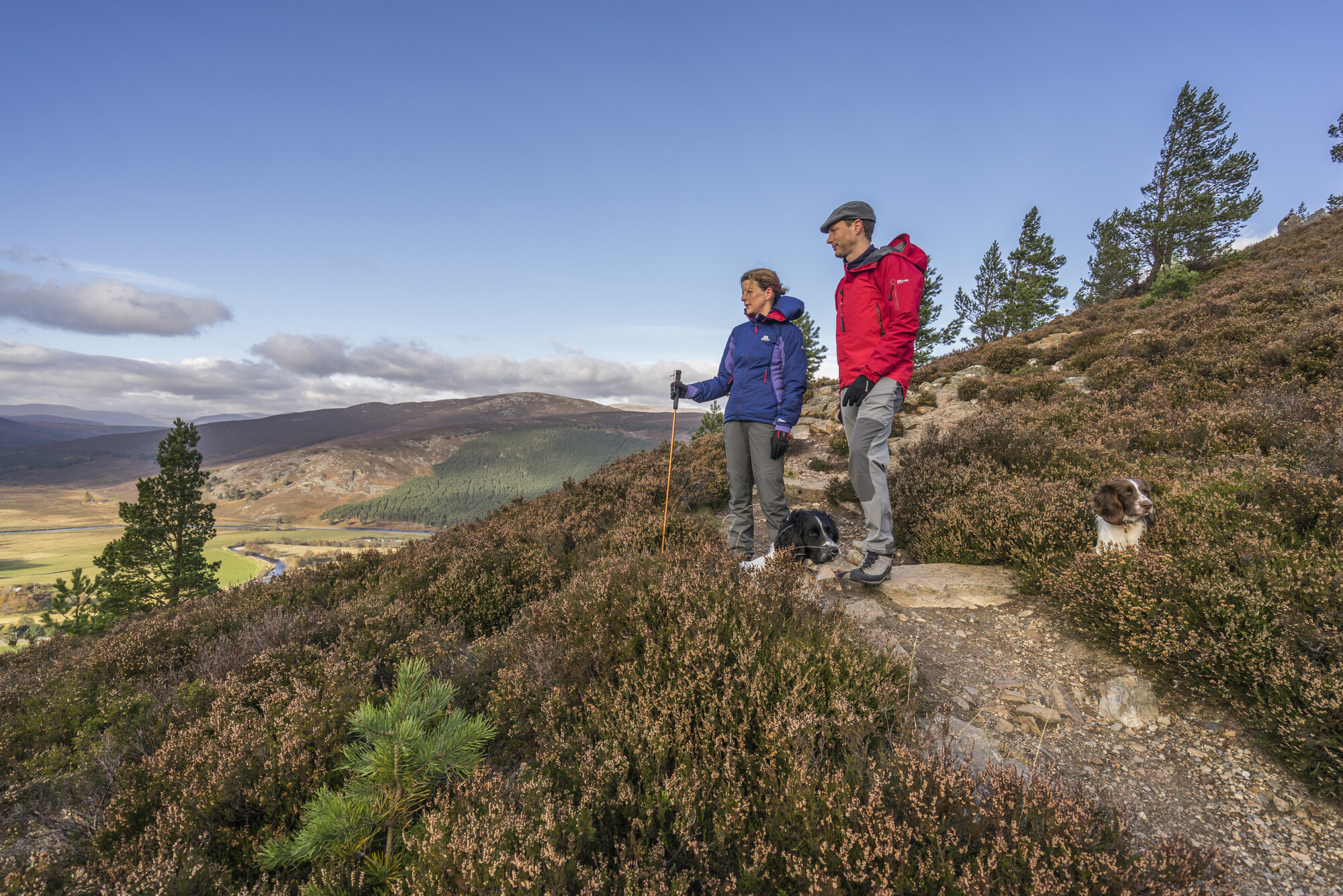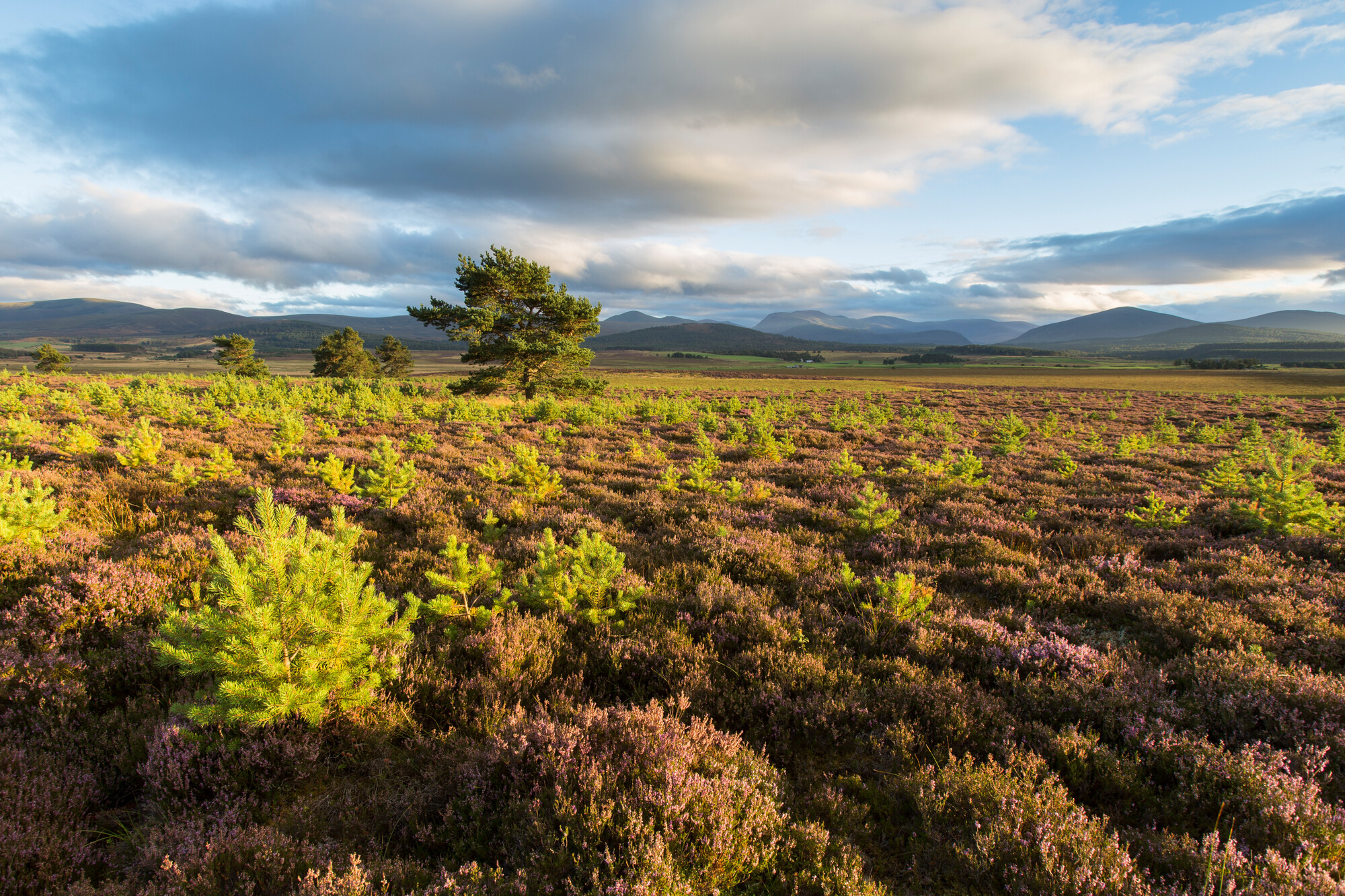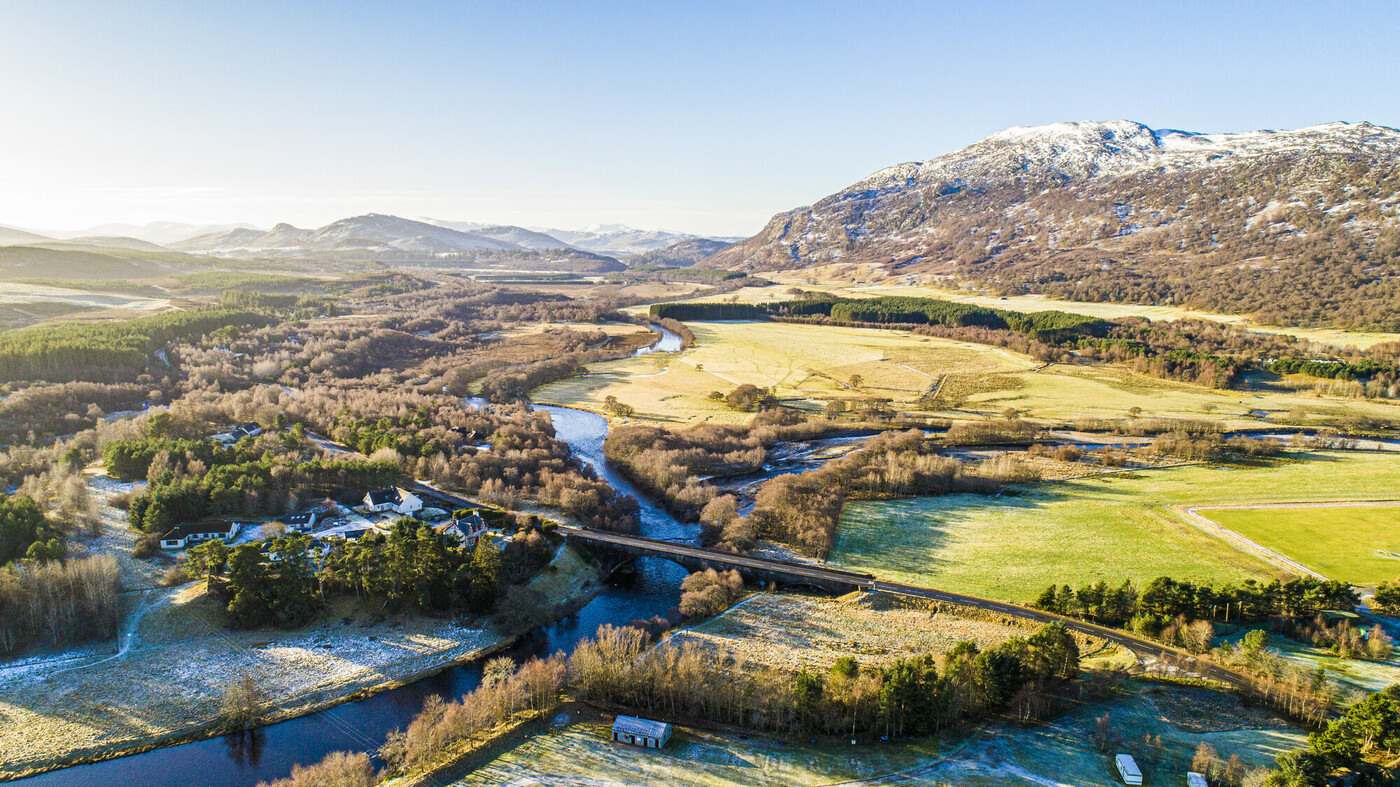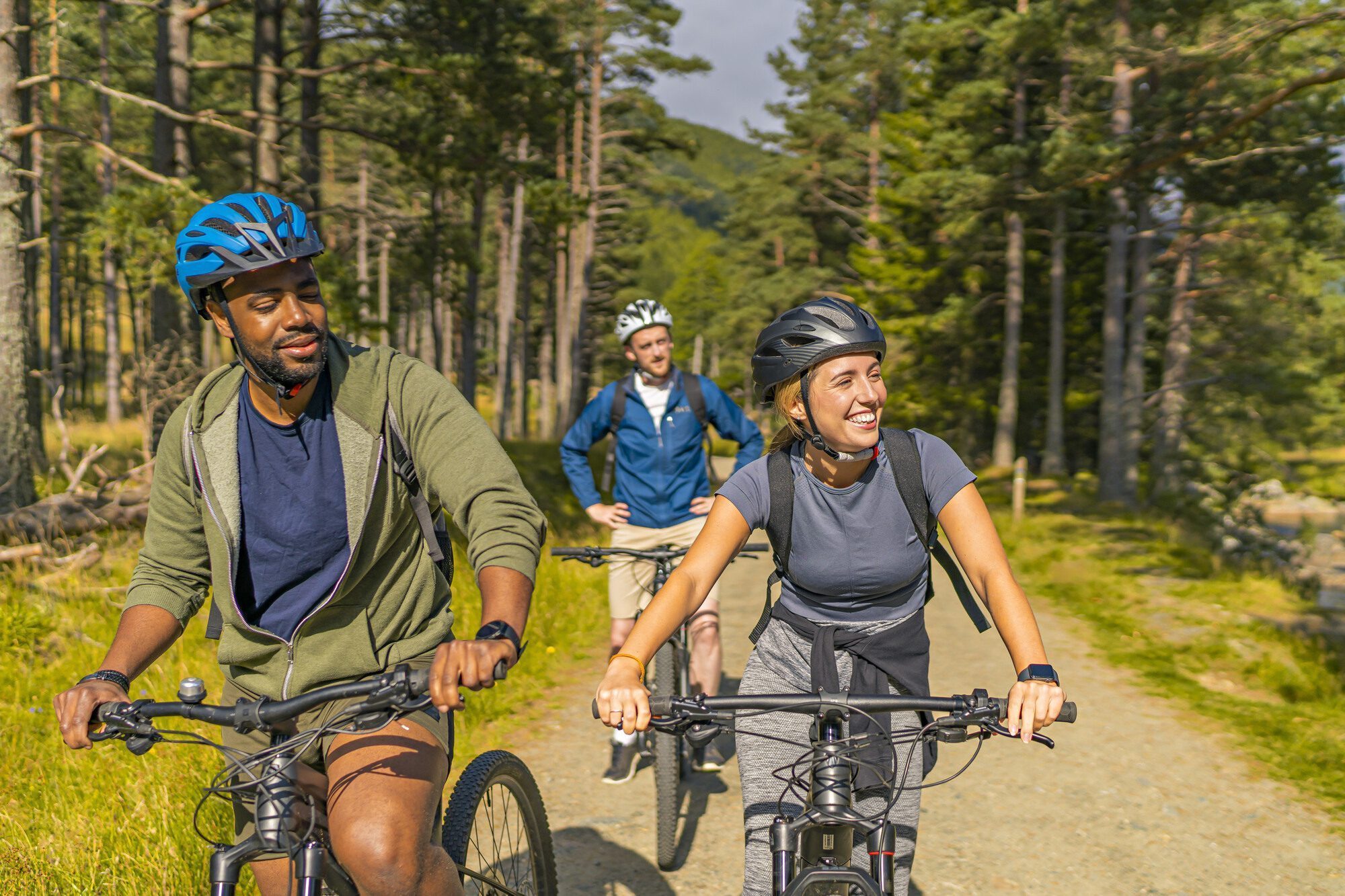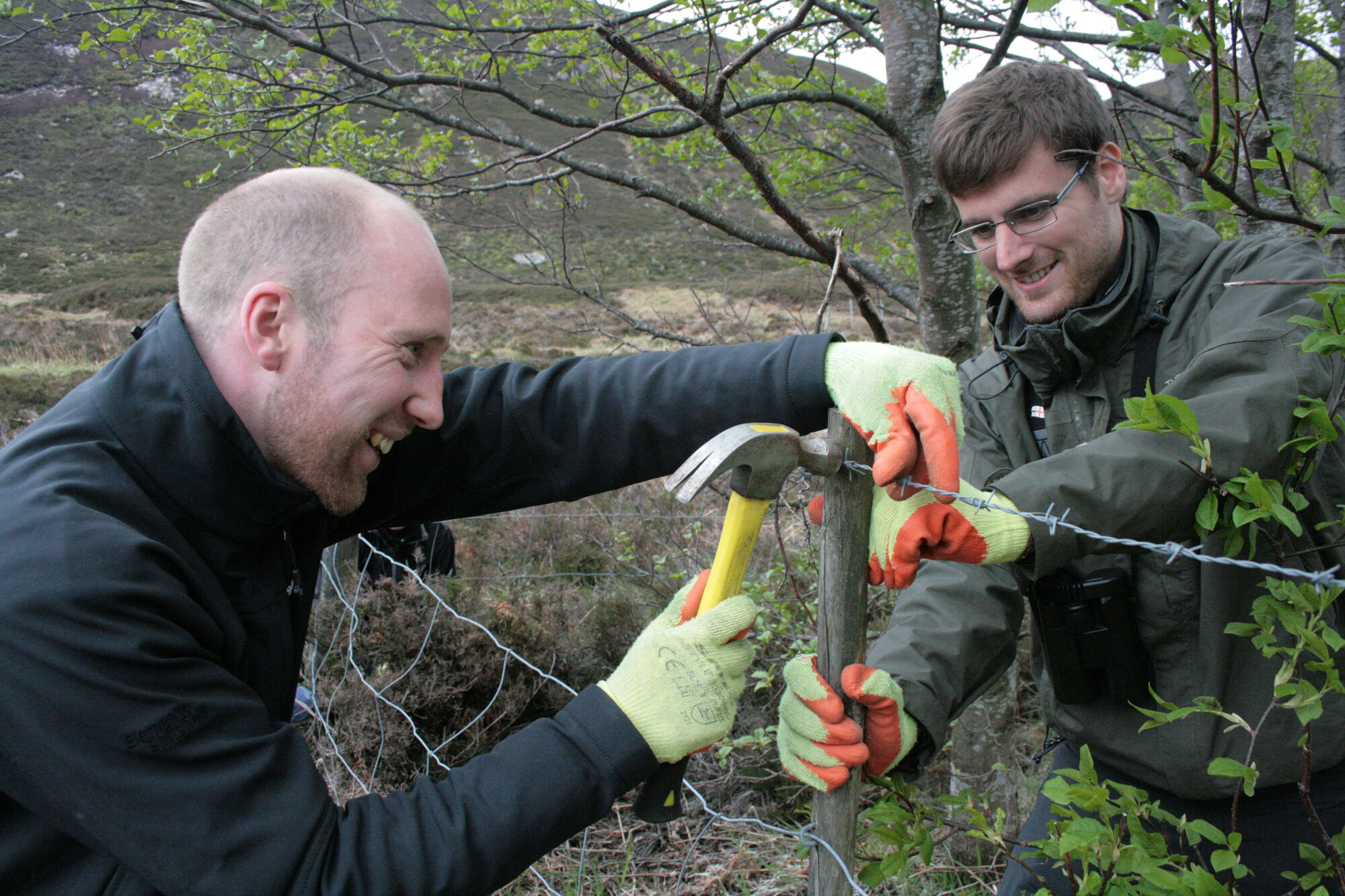Visitor survey results 2019 - 2020
Cairngorms National Park Authority
Visitor Survey 2019 – 20
Final Report
June 2020
Contents
- Project background
- Sampling
- Research objectives
- Research findings
- Visitor profile
- Motivations to visit Cairngorms area
- Trip profile
- Evaluation of visit
- Method
- Final summary and conclusions
- Analysis
Project background
The Cairngorms National Park was established in 2003 and is one of Scotland’s two national parks (the other being Loch Lomond & The Trossachs National Park).
The National Park Authority co-ordinates the delivery of four statutory aims: to conserve and enhance the area’s natural and cultural heritage; to promote the sustainable use of the area’s natural resources; to promote understanding and enjoyment of the Park’s special qualities; and to promote sustainable economic and social development of local communities.
To make sure these aims are met, the bodies responsible for the parks’ management require information regarding visitor profile and behaviour, volumes of use, visitors’ knowledge and attitudes, and the impacts of information provided to visitors.
Previous visitor surveys have been conducted within the National Park — in 2003⁄04, 2009⁄10 and 2014⁄15. This research was commissioned to continue to inform the sustainable management of the park through the 2019⁄20 Visitor Survey. This report provides data and analysis pertaining to the 11 months from May 2019 to March 2020.
Research objectives
The overall aim of the research was to understand visitors to the Cairngorms National Park in terms of their profile, visiting behaviour and visitor experience. Specific research objectives were to:
1: Supply information about visitors and their type of visit, to guide future tourism policy and activity
2: Gather data which can be updated in future studies to enable changes to be tracked over time
3: Analyse and compare with previous Visitor Surveys and between the two national parks
4: Better understand visitors’ experience and motivations segmented by demographic and protected characteristics
Method
• The research data was gathered using face-to-face interviews conducted with visitors and residents at key points throughout the Cairngorms National Park. All visitors and residents who were interviewed were on a leisure trip at the time of the interview.
• Interviews were conducted using Computer Aided Personal Interviewing (CAPI) technology.
• The objective at the outset of the study was to gather data over 12 months – from May 2019 to April 2020. However, due to the coronavirus outbreak in 2020, interviewing had to be concluded in March 2020.
• All data within this report refers to the 11 month period from May 2019 to March 2020. Data for the 2014⁄15 wave of research has been adjusted to exclude April 2015 to ensure valid comparisons.
• The target sample for the year was 2,500. Across the 11 months 2,262 interviews were achieved. Sample size targets were set each month to ensure a representative spread across the year, with 40 sample points across the Park. The majority of sample points were matched to previous years, however, some new points were introduced in 2019⁄20 to reflect new attractions within the Park, e.g. Snow Roads locations.
• A random sampling approach was used (no quotas set) – to ensure accurate visitor profiling.
• Each interview lasted approximately 12 minutes.
All work has been carried out in accordance with ISO 20252 guidelines and the MRS Code of Conduct
Analysis
Statistical validity
• The margins of error associated with the data are detailed below. These are calculated at the 95% confidence interval (market research industry standard).
| Sample type | Sample size | Margin of error |
|---|---|---|
| Total sample | 2,262 | +/- 0.41% to +/- 2.06% |
| Visitors | 2,191 | +/- 0.42% to +/- 2.09% |
| Residents | 71 | +/- 2.31% to +/- 11.61% |
• Comparisons to 2014⁄15 data are based on 11 months – May 2014 to March 2015 – to ensure comparability to 2019⁄20.
• Only statistically significant differences are reported.
• Bases vary by question depending on routing.
• Where figures do not add to 100% this is due to multi-coded responses or rounding.
• In commentary where net figures are reported these may differ slightly from the added figures in the chart. This is due to rounding and using absolute figures to calculate nets.
• On some charts figures of <1% and 1% are not shown for ease of reading.
• Updates to the questionnaire in 2019 mean that direct comparisons to previous years are not possible for some questions. This is noted where relevant throughout the report.
Sub-sample analysis
• The analysis detailed in this report includes highlighting statistically significant differences between sample sub-groups.
• These sub-groups are:
* Season -Summer (Jun, Jul, Aug 2019); Autumn (Sept, Oct, Nov 2019); Winter (Dec 2019, Jan 2020, Feb 2020); Spring* (May 2019, March 2020)
* Origin 1 - Scotland; rest of UK; all overseas
* Origin 2 - Scotland; rest of UK; Europe; North America; other overseas
* Gender - male; female
* Age - 16-34; 35-44; 45-54; 55-64; 65+
* Locations - Aberdeenshire; Glenmore; Badenoch; Strathspey; Moray; Aviemore; Atholl; Angus
• The sample sizes for each sub-group are detailed below:
| Season | Base | Origin | Base | Demographics | Base | Location | Base |
|---|---|---|---|---|---|---|---|
| Summer | 1,260 | Scotland | 1,132 | Male | 1,182 | Aberdeenshire | 487 |
| Autumn | 448 | Rest of UK | 542 | Female | 1,079 | Glenmore | 467 |
| Winter | 280 | Europe | 375 | 16 – 34 | 487 | Badenoch | 310 |
| Spring | 274 | North America | 120 | 35 – 44 | 439 | Strathspey | 301 |
| Other overseas | 93 | 45 – 54 | 450 | Moray | 275 | ||
| All overseas | 588 | 55 – 64 | 475 | Aviemore | 199 | ||
| 65+ | 411 | Atholl | 115 | ||||
| Angus | 108 |
*Spring excludes April data — the Coronavirus outbreak meant no interviewing could take place in April 2020
Sampling
Day and month
• Sampling was spread across days of the week and the months of the year.
• A sampling plan was prepared at the project outset to allocate interviewing across the 40 sampling points and across the months of the year. This plan broadly replicated the 2014⁄15 sample plan to ensure comparability of findings.
• The largest proportion of interviewing was conducted in the summer months of June, July and August (56%). The autumn months (September, October, November) accounted for one fifth of interviews and 12% were conducted in each winter (December, January, February) and spring (March, May).
• More interviews were conducted in summer in 2019⁄20 compared to 2014⁄15 (45%), with fewer conducted in winter (16% in 2014⁄15) and spring (17% in 2014⁄15).
| Weekday | % |
|---|---|
| Sunday | 10% |
| Monday | 11% |
| Tuesday | 14% |
| Wednesday | 22% |
| Thursday | 8% |
| Friday | 21% |
| Saturday | 15% |
| Season | % |
|---|---|
| Summer | 56% |
| Autumn | 20% |
| Winter | 12% |
| Spring | 12% |
Locations
• The sample plan was also designed to ensure comparability to 2014⁄15 in terms of the areas where the interviewing was conducted.
• Just over a fifth of interviews were conducted in the Aberdeenshire and Glenmore areas of the Park, while 14% were conducted in Badenoch and 13% in Strathspey.
• More interviews were conducted in Glenmore and fewer in Aberdeenshire in 2019⁄20 than in 2014⁄15.
• A full breakdown of the individual sample points is detailed over.
| Location | 2019 – 20 | 2014 – 15 |
|---|---|---|
| Aberdeenshire | 22% | 31% |
| Glenmore | 21% | 16% |
| Strathspey | 13% | 13% |
| Badenoch | 14% | 12% |
| Moray | 9% | 12% |
| Aviemore | 9% | 10% |
| Atholl | 5% | 4% |
| Angus | 5% | 4% |
| Area | Sampling location | Number | % |
|---|---|---|---|
| Aviemore ‑9% | Aviemore main street | 199 | 9% |
| Glenmore — 21% | Rothiemurchus Car Park | 80 | 4% |
| Loch an Eilein | 88 | 4% | |
| Loch Morlich/Glenmore Centre & Café | 119 | 5% | |
| Cairngorm Ski Centre – car park at base station | 145 | 6 | |
| Atholl ‑5% | Blair Atholl — village square | 39 | 2% |
| Blair Castle | 13 | 1% | |
| House of Bruar | 25 | 1% | |
| Killiecrankie | 38 | 2% | |
| Badenoch — 14% | Laggan — near Pottery | 25 | 1% |
| Highland Folk Museum, Newtonmore | 54 | 2% | |
| Kingussie — main street | 68 | 3% | |
| Kincraig Highland Wildlife Park | 66 | 3% | |
| Laggan — Wolftrax | 35 | 2% | |
| Dalwhinnie Distillery | 30 | 1% | |
| Uath Lochans | 23 | 1% | |
| Achlean Road end | 9 | <1% | |
| Angus ‑5% | Glen Esk Car Park | 46 | 2% |
| Glen Doll/Clova Car Park | 62 | 3% | |
| Strathspey – 13% | Landmark Centre, Carrbridge | 129 | 6% |
| Speyside Heather Centre, Skye of Curr | 43 | 2% | |
| Osprey Centre Car Park, Loch Garten | 69 | 3% | |
| Grantown on Spey – main street | 60 | 3% | |
| Moray – 12% | Glenlivet Distillery Car Park | 47 | 2% |
| Tomintoul — village centre | 82 | 4% | |
| Lecht Ski Area | 61 | 3% | |
| Snow roads — Still | 30 | 1% | |
| Snow roads — Watchers | 55 | 2% | |
| Aberdeenshire – 22% | Ballater — village centre/TIC | 94 | 4% |
| Loch Muick Car Park | 41 | 2% | |
| Balmoral Car Park | 47 | 2% | |
| Royal Lochnagar Distillery Car Park | 22 | 1% | |
| Braemar — village centre | 53 | 2% | |
| Linn of Dee Car Park | 63 | 3% | |
| Glenshee | 58 | 3% | |
| Burn O’Vat Car Park, Dinnet | 43 | 2% | |
| Glen Tanar Car Park | 41 | 2% | |
| Strathdon | 16 | 1% | |
| Snow roads — Connecting Contours | 9 | <1% |
Visitor profile
Demographics
• The total sample included slightly more males (52%) than females (48%). This represents a small increase in female respondents compared to 2014⁄15.
• There was an even spread across the age groups from age 35 and older with approximately one fifth of respondents falling into each band. One fifth were also in the under 35 year old age group, with 5% aged 16 to 24 and 16% aged 25 to 34.
• Younger respondents were more likely to visit the Cairngorms in the winter months than older respondents – 31% of winter visitors were aged 16 to 34 compared to 20% at other times of year. This is likely to be due to the popularity of snow sports amongst younger age groups.
• The age profile of the sample in 2019⁄20 matched the profile in 2014⁄15.
| Category | 2014 – 15 | 2019 – 20 |
|---|---|---|
| Male | 44% | 48% |
| Female | 56% | 52% |
| 16 – 24 | 6% | 5% |
| 25 – 34 | 16% | 16% |
| 35 – 44 | 21% | 19% |
| 45 – 54 | 20% | 20% |
| 55 – 64 | 20% | 21% |
| 65+ | 17% | 18% |
Origin
• The majority of visitors to the Cairngorms National Park in 2019⁄20 were from the UK (73%), with 48% from Scotland and 25% from the rest of the UK.
• Of the 27% overseas visitors, the largest proportion was from Europe (17%), with a further 5% from North America, 3% from Australia/New Zealand and 1% from other countries.
• The origin profile of visitors in 2019⁄20 was very similar to the profile in 2014⁄15. There were, however, slightly fewer visitors from Scotland and more from Europe and other parts of the world.
• The proportion of visitors from Europe peaked in spring and summer, while during the winter months almost two thirds of visitors were from Scotland, 28% were from the rest of the UK and very few visitors (only 7%) were from overseas.
| Origin | 2014 – 15 | 2019 – 20 |
|---|---|---|
| Scotland | 52% | 48% |
| Rest of UK | 26% | 25% |
| Europe | 14% | 17% |
| Rest of world | 7% | 10% |
| Origin | Summer | Autumn | Winter | Spring |
|---|---|---|---|---|
| Scotland | 65% | 50% | 45% | 43% |
| Rest of UK | 23% | 26% | 28% | 29% |
| Europe | 7% | 12% | 3% | 22% |
| Rest of world | 10% | 11% | 11% | 4% |
• Outside of the UK, the largest market for visitors is Europe. In total, 17% of visitors to the Cairngorms National Park 2019⁄20 were from Europe.
• The most prevalent European countries were Germany (6%), France (3%) and the Netherlands (2%).
• The USA accounted for 4% of visitors, while 2% were from Australia.
• Visitors from Europe tended to be younger than those from elsewhere – 36% were aged 16 to 34 compared to 20% of visitors from Scotland, 15% of those from the rest of the UK and 20% from other parts of the world.
| Origin | % |
|---|---|
| Scotland | 48% |
| England | 24% |
| Wales | 1% |
| N Ireland | 1% |
| Germany | 6% |
| France | 3% |
| Netherlands | 2% |
| Italy | 1% |
| Spain | 1% |
| Other Europe | 4% |
| USA | 4% |
| Canada | 1% |
| Australia | 2% |
| New Zealand | 1% |
| Other | 1% |
• The largest proportions of visitors from Scotland came from areas within a close proximity of the Park, such as Aberdeen/shire (23%) and Highlands and Islands (16%).
• Over a quarter visited from eastern areas, including Edinburgh (14%) and Fife/Dundee (13%).
• Fewer Scotland visitors tended to come from Glasgow and Perthshire/Stirling/Falkirk – each accounting for one in ten of Scotland visitors.
| Origin | % |
|---|---|
| Aberdeen / Aberdeenshire | 23% |
| Highlands & Islands | 16% |
| Edinburgh | 14% |
| Fife / Dundee | 13% |
| Glasgow/Greater Glasgow area | 11% |
| Perthshire / Stirling / Falkirk | 10% |
| Other Central belt | 5% |
| Dumfries and Galloway / Borders | 2% |
| Ayrshire | 1% |
| Other | 6% |
• Visitors from England came from a variety of regions.
• The top origin locations were the South East (20%) and the North West (17%).
| Region | % |
|---|---|
| South East | 20% |
| North West | 17% |
| South West | 11% |
| London | 11% |
| Yorkshire and the Humber | 11% |
| North East | 10% |
| West Midlands | 7% |
| East Midlands | 7% |
| East of England | 5% |
| Other | 1% |
Economic
• The total sample of visitors and residents was skewed to more affluent socio-economic groups, with 34% within the AB group and 36% in C1.
• The summer and autumn seasons had particularly high proportions of visitors in the ABC1 socio-economic groups – 76% in summer and 71% in autumn, compared to 58% in winter and 56% in spring.
• Over two thirds (69%) were in employment while one quarter were retired. Very few were unemployed, students or looking after home/family.
• The working status findings were very similar to 2014⁄15 with a slight decrease in the proportion working full time and increases in those working part time or self-employed.
• The socio-economic profile of respondents showed a higher proportion in the C2DE groups and fewer in the ABC1 groups in 2019⁄20 compared to 2014⁄15.
| Category | 2014 – 15 | 2019 – 20 |
|---|---|---|
| Working full time | 59% | 55% |
| Working part time | 6% | 8% |
| Self-employed | 3% | 6% |
| Retired | 23% | 24% |
| Unemployed | <1% | 1% |
| Student | 4% | 3% |
| Looking after home/family | 2% | 2% |
| AB | 30% | 34% |
| C1 | 45% | 36% |
| C2 | 15% | 20% |
| DE | 7% | 6% |
| Refused | 3% | 3% |
Ethnicity
• In total, 2.4% of visitors to the Cairngorms National Park in 2019⁄20 were of Black, Asian or minority ethnic groups.
• This finding is slightly higher than in 2014⁄15 when 1% were from Black, Asian or minority ethnic groups.
• The largest proportions of ethnic minority visitors were from rest of UK (4%) and rest of the world, excluding Europe and North America (12%). The proportions of BAME visitors were lower for visitors from Scotland (2%), Europe (1%) and North America (2%).
| Category | 2014 – 15 | 2019 – 20 |
|---|---|---|
| White | 97% | 97% |
| Mixed | 1% | 1% |
| Asian, Asian Scottish/British | 1% | 1% |
| Black, Black Scottish/British | <1% | <1% |
| Other | <1% | <1% |
| Prefer not to say | 2% | 1% |
Health
• Almost one in ten (9%) visitors to the Cairngorms in 2019⁄20 reported that they, or someone in their group, had a long term health condition or disability.
• This proportion is slightly higher than in 2014⁄15 when 7% reported that they or someone in their group had a health condition or disability.
• The most common health condition was mobility related (51%).
• A number of people mentioned other conditions, such as heart conditions (9 respondents; 5%), diabetes (7 respondents; 4%), and cancer (4 respondents; 2%).
| Category | 2014 – 15 | 2019 – 20 |
|---|---|---|
| Yes | 7% | 9% |
| No | 92% | 91% |
| Prefer not to say | 1% | 1% |
| Mobility | 84% | 51% |
| Sensory | 8% | 7% |
| Mental health | 1% | 6% |
| Learning disability | 1% | 4% |
| Other | 1% | 12% |
| Prefer not to say | 1% | 5% |
First time/repeat visitors
• Over one third of all visitors in 2019⁄20 reported that it was their first ever visit to Cairngorms National Park.
• As we would expect, visitors from Scotland (12%) and the rest of the UK (39%) were less likely to be first time visitors than those from overseas (81%).
• When asked how often they had visited in the last five years, 44% reported that their current visit was the first in that time frame.
• More than a quarter (28%) were very regular visitors having visited 7 or more times in the last five years.
| Category | % |
|---|---|
| First time visitor | 37% |
| Repeat visitor | 63% |
| First visit in five years | 44% |
| 2 — 3 times | 16% |
| 4 — 6 times | 13% |
| 7 – 10 times | 8% |
| 11 — 20 times | 9% |
| > 20 times | 14% |
Motivations to visit Cairngorms area
Why Cairngorms?
• The main motivation for people visiting Cairngorms National Park was to enjoy the beautiful scenery mentioned by over half of respondents. Other key reasons for visiting included walking, for peace and quiet, sightseeing, visiting attractions, wildlife/bird watching and hillwalking.
• The beautiful scenery was particularly important to overseas visitors (74%) compared to those from Scotland (39%) or the rest of the UK (54%). Europeans were the most likely to be attracted by peace and quiet (35%) and a higher than average proportion mentioned hill walking (23%). A good variety of things to do for children was a key motivation for Scotland visitors (12%). Visiting attractions was more likely to be mentioned by overseas visitors (31%) than those from Scotland (18%) or the rest of the UK (17%).
• As we would expect, motivations for visiting in winter were different from other seasons. Winter visitors were more likely to be motivated by snow sports (42%) and less likely to mention factors such as scenery (27%), walking (13%), sightseeing (10%) and peace and quiet (14%) than visitors in other seasons.
• These motivations correspond with the most popular reasons for visiting the Cairngorms in 2014⁄15, although fewer people mentioned the beautiful scenery in the previous survey (35%).
| Motivation | % |
|---|---|
| Beautiful scenery/countryside/landscape | 52% |
| Walking (other than hill walking) | 25% |
| Peace and quiet/relaxation | 25% |
| Sightseeing | 22% |
| Visiting attractions | 21% |
| Been before/enjoyed a previous visit | 19% |
| Wildlife/bird watching etc | 18% |
| Hill walking | 17% |
| Never been before/always wanted to come | 10% |
| Good variety of things to do for children | 9% |
| Cycling/mountain biking | 8% |
| Good variety of things to do for adults | 8% |
| Skiing/snowboarding | 7% |
| Passing through/stopping for a break | 6% |
| Visiting friends/family | 5% |
| Close to where I live | 2% |
| An event | 2% |
| The Speyside Way | 1% |
| Part of an organised tour/trip | 1% |
| The Snow Roads | 1% |
| Canoeing/kayaking | 1% |
| Fishing | 1% |
| Climbing | 1% |
| Other | 10% |
Inspiration
• As well as determining the reasons for visiting the Cairngorms National Park, it is also important to understand sources of inspiration, such as travel features, films, books and TV.
• In total, 30% of visitors reported that they were inspired to visit the Park by something they saw, read or heard.
• The most popular source of inspiration was a travel feature about the Cairngorms (10%). Other sources that inspired visits to the Cairngorms included books about or set in the area (6%), TV programmes (5%), recommendations (5%) and online video content (5%).
• Visitors from overseas were more likely to be inspired by things they had seen or heard than those from the UK; 59% mentioned at least one source compared to 14% of Scotland visitors and 31% of visitors from the rest of the UK. In particular, 24% of overseas visitors were inspired by a travel feature (compared to 3% of those from Scotland and 9% from rest of UK), while 15% were inspired by reading a book.
• First time visitors were also more likely to be influenced by something they had seen or heard – 54%, compared to 16% of repeat visitors. In particular, first time visitors were inspired by a travel feature (21%), a book (11%), a TV programme (9%) or online video content (9%).
| Inspiration | % |
|---|---|
| Travel feature about the area | 10% |
| A book about/set in the area | 6% |
| A TV programme about the area | 5% |
| Recommendation/word of mouth | 5% |
| Online video content about the area | 5% |
| Advertising or other marketing | 4% |
| A movie/film about the area | 2% |
| Other | 1% |
| None of these | 69% |
| Don’t know/can’t remember | 1% |
National park status
• Almost nine out of ten visitors to the Cairngorms National Park reported being aware that the area is a national park. This finding is very similar to the proportion measured in 2014⁄15.
• Awareness of national park status was higher for Scotland (95%) and rest of UK visitors (89%) than for overseas visitors (79%).
• Over half of respondents who were aware of the national park status of the Cairngorms area stated that this was important to their decision to visit, with an even split between those describing it as ‘very’ and ‘quite’ important.
• This represents a significant increase in the importance of the national park status to visitors compared to 2014⁄15 when 36% of aware visitors considered it important.
| Category | 2014 – 15 | 2019 – 20 |
|---|---|---|
| Aware national park | 91% | 89% |
| Not aware / unsure | 9% | 11% |
| Category | 2019 – 20 |
|---|---|
| Very important | 28% |
| Quite important | 28% |
| Neither nor | 19% |
| Not very important | 11% |
| Not at all important | 14% |
| Category | 2014 – 15 |
|---|---|
| Very important | 13% |
| Quite important | 23% |
| Neither nor | 23% |
| Not very important | 15% |
| Not at all important | 27% |
• The importance of national park status was found to vary with origin of respondent.
• Visitors from Europe were the most likely to consider it important, while those from Scotland were the least likely.
| Category | All | Scotland | Rest of UK | Europe | Rest of world |
|---|---|---|---|---|---|
| Don’t know | 55% | 49% | 56% | 71% | 60% |
| Very important | 28% | 26% | 25% | 34% | 36% |
| Quite important | 28% | 24% | 31% | 37% | 24% |
| Neither/nor | 19% | 21% | 21% | 11% | 20% |
| Not very important | 11% | 13% | 11% | 7% | 9% |
| Not at all important | 14% | 16% | 13% | 10% | 11% |
Trip profile
Type of trip
• Screener questions were used at the start of the survey to determine the reasons why people were visiting the area. Those visiting for business/work or for personal business (such as food shopping, post office, doctors) were screened out.
• As we would expect, amongst those who took part in the survey, the predominant reason for visiting for both visitors to the Cairngorms and residents was a leisure trip, such as a day trip, short break or holiday.
• A small minority of 2% of visitors were visiting friends or relatives as part of their trip, while 1% were combining business and leisure in one trip.
| Category | Visitors | Residents |
|---|---|---|
| Leisure/holiday/day out | 97% | 96% |
| Visiting friends/relatives | 2% | 1% |
| Business and leisure | 1% | 3% |
| Other | N/A | 1% |
Party composition
• Just over half of respondents were visiting Cairngorms National Park in a group of two people, while one in ten were visiting alone, one quarter had three or four people in their group and 13% had five or more. The average total group size was 3.1 people.
• Just over a quarter of respondents reported having children aged under 18 in their party. The average number of children in the group amongst these respondents was 2.1. There were higher proportions of visitors with children in summer (30%) and winter (27%) than in autumn (20%) or spring (15%).
• Visitors from Scotland were the most likely to have children in their party (33%), followed by those form the rest of the UK (21%). Only 14% of overseas visitors had children with them. As we would expect, visitors in the 35 to 44 (48%) and 45 to 54 (36%) age groups were also more likely to be visiting with children.
• All of these figures very closely correspond to the data gathered in 2014⁄15.
• A slightly higher proportion were visiting with dogs in 2019⁄20 (15%) than in 2014⁄15 (12%). Amongst visitors from the UK, 20% were visiting with a dog.
| Category | 2014 – 15 | 2019 – 20 |
|---|---|---|
| One | 9% | 10% |
